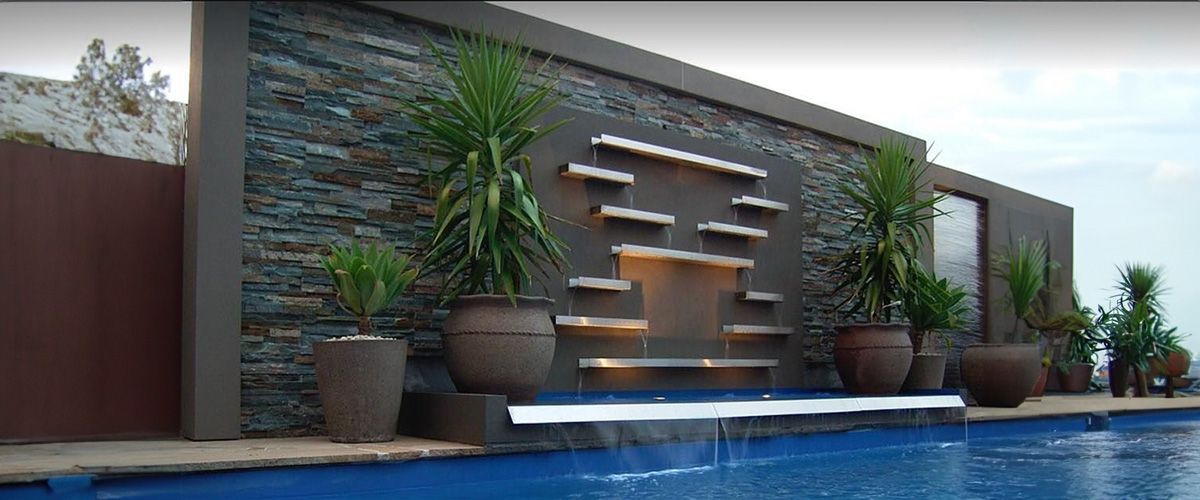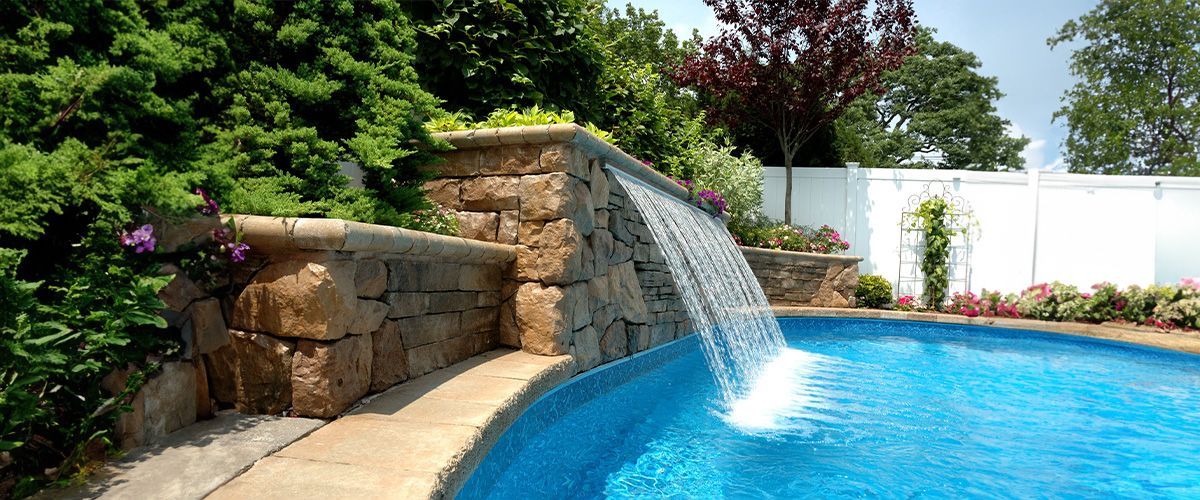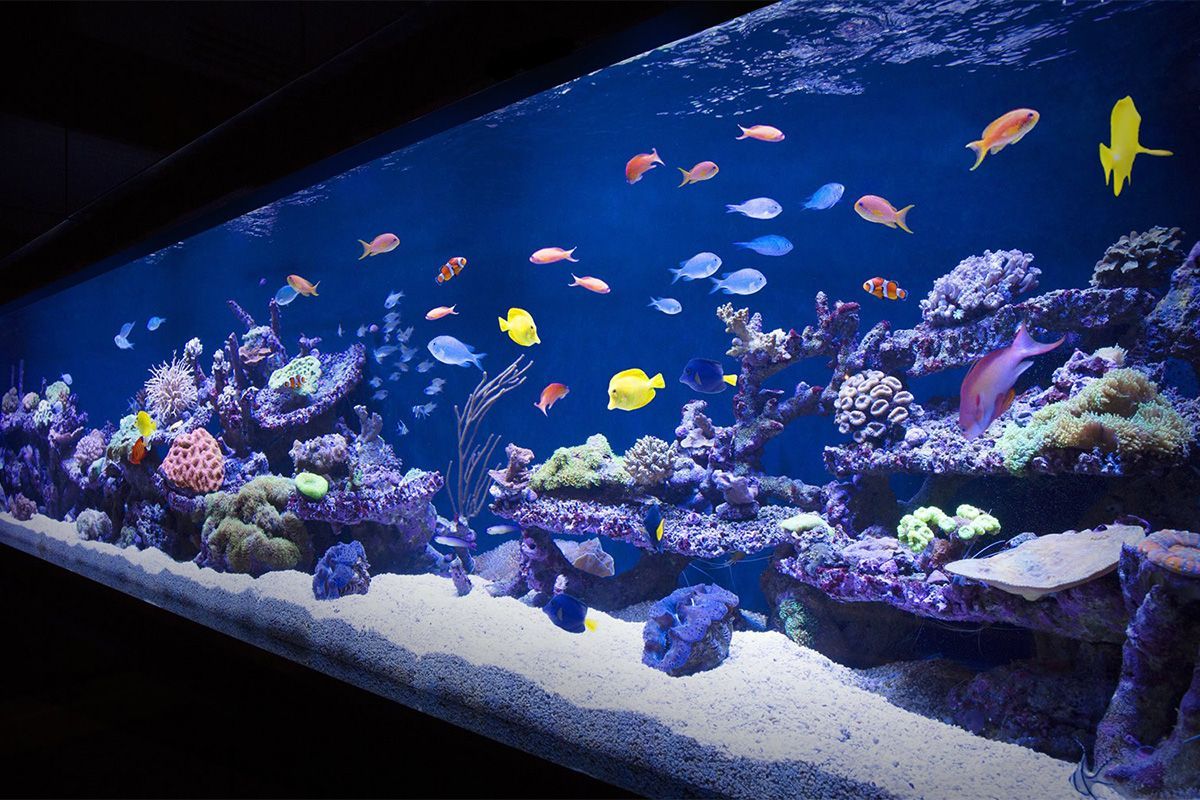Does Gravel or Fabric Prevent Soil from Eroding?
(Podcast Episode) Does Gravel or Fabric Prevent Soil from Eroding?
Are you worried about looking at a landscape that is constantly eroding? Do you put excessive time and effort into maintaining your outdoor space due to weeds and soil erosion? If so, you're not alone. Many homeowners need help maintaining their outdoor space's health and stability, especially when preventing soil erosion. Fortunately, this problem has effective solutions, such as using gravel or landscape fabric.
But which one is right for your landscape? Should you choose gravel or fabric to prevent soil erosion? The answer depends on some factors, like the slope of your landscape, the climate in your area, and the health of your plants.
In this blog, we'll explore the benefits of using gravel and landscape fabric, how to install them properly, and what factors to consider when choosing between them. With this information, you can make a proper decision and take steps toward maintaining a healthy and stable outdoor space. So let's get started!
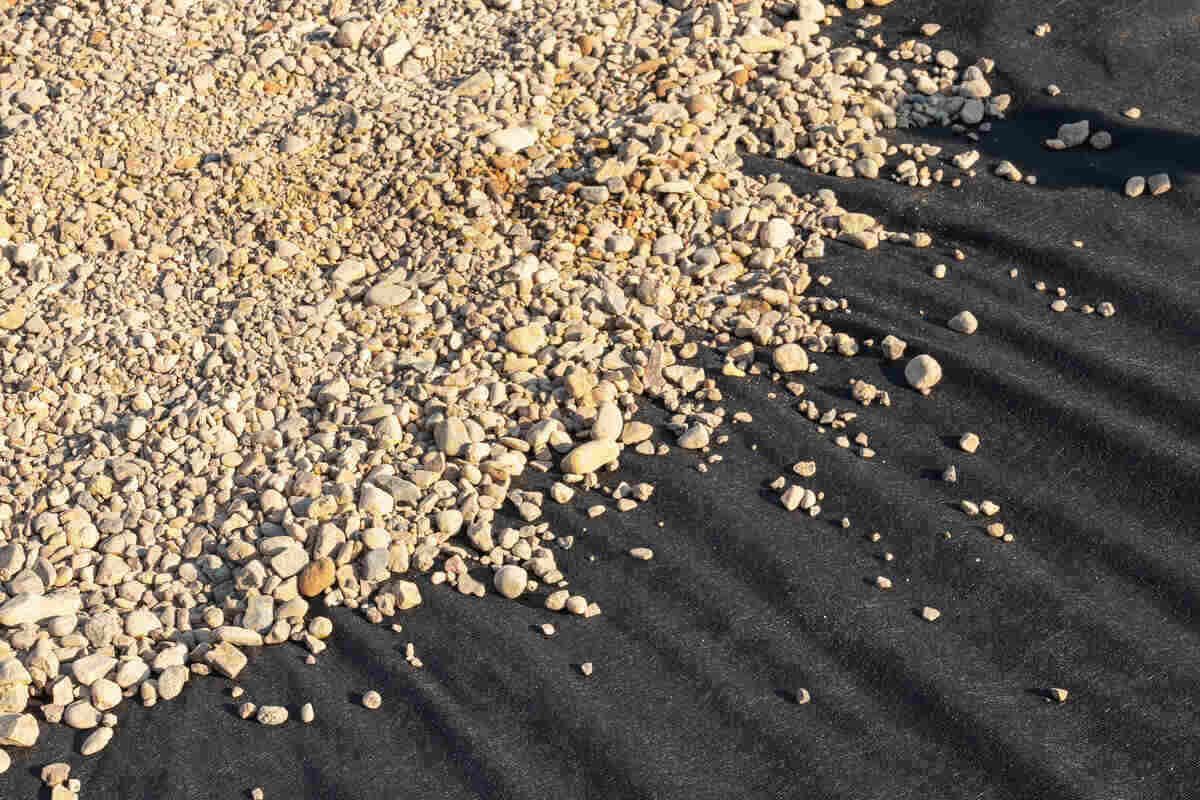
Gravel Material for Preventing Soil Erosion
Due to its various benefits,
gravel is a popular material for preventing soil erosion in landscapes. Here are a few benefits of utilizing gravel to stop soil erosion.
- Creates a Barrier: When
gravel is placed on the soil, it creates a barrier that helps prevent water from washing away the soil. It is
essential in landscapes with steep slopes or heavy rainfall, where soil erosion can occur quickly.
- Allows Water to Pass Through: Water can permeate gravel and enter the ground, which helps to keep the soil moist. It is essential for plant growth, as plants require water to thrive.
- Provides Stability: Gravel is heavy and provides stability to the landscape. It can prevent soil from moving and protect the landscape from damage when installed correctly.
How to Install Gravel to Prevent Soil Erosion
Installing gravel to prevent soil erosion requires careful planning and execution. Here are some steps to follow:
- Prepare the
Soil: Before
installing gravel, remove any weeds or debris from the part you want to install. It will help to create a stable surface for the
gravel.
- Place
the
Gravel: Spread a layer of
gravel
over the
soil. The depth of the
gravel
layer should be determined by the
landscape's
slope and the
gravel's
size. Generally, a 2-4 inches’ layer is sufficient for most
landscapes.
- Compact the
Gravel: Press the
gravel
into the
soil
using a compactor. It will help to create a stable surface that prevents
soil erosion.
Landscape fabric for Preventing Soil Erosion
Landscape fabric is another popular material for preventing soil erosion in landscapes. These are the benefits of using landscape fabric:
- Prevents Weed Growth:
Landscape fabric can prevent weed growth, which can destabilize the
soil. Weeds can also make it challenging to maintain a
landscape, as they compete with plants for nutrients and water.
- Allows Water to Pass Through: Like
gravel, landscape fabric allows water to pass through and into the soil. It helps to keep the soil soft and moist and provides nutrients for plant growth.
- Retains Soil moisture: Landscape fabric can help to maintain soil moisture, which is beneficial for plant growth. In dry climates, landscape fabric can effectively conserve water and maintain a healthy landscape.

How to Install Landscape fabric to Prevent Soil Erosion
The actions to take while using landscape fabric to stop soil erosion are as follows:
- Prepare the
Soil: Clean any weeds or debris from the part where you want to
install
the
fabric. It will help to create a stable surface for the
fabric.
- Place
the
Fabric: Spread the
landscape fabric over the
soil. Be sure to overlap the edges to create a continuous layer. The
fabric
should be
placed
tightly against the
soil
to prevent water from seeping through.
- Secure the
Fabric: Use
landscape
staples or stakes to secure the
fabric. It will prevent it from moving during heavy rainfall or wind.
- Add Gravel or Rock: If desired, place gravel or rock over the landscape fabric to increase stability. It will help prevent soil erosion and maintain the landscape's health.
Fabric underneath rocks or Gravel
Another option is to use landscape fabric underneath rocks or
gravel. This method can provide extra stability to the
landscape
and prevent
soil erosion. Here are some benefits of using
landscape fabric underneath rocks or gravel:
- Reduces Weed Growth: Using
landscape fabric underneath rocks or gravel can reduce weed growth and minimize the maintenance required in the
landscape.
- Provides Stability:
Landscape fabric underneath rocks or
gravel
offers a stable surface, which can help to prevent
soil erosion. It is essential in areas with heavy rainfall or steep slopes.
- Protects Plants: Landscape fabric can help to protect plants from damage caused by rocks or gravel. The plant's stems and roots are protected from abrasion by the barrier it creates between them and the hard surface.
How to Install Landscape fabric underneath rocks or Gravel
Following are some guidelines for placing landscape fabric under rocks or gravel:
- Prepare the
Soil: Clean any weeds or debris from the ground where you want to
install
the
fabric. It will help to create a stable surface for the
fabric.
- Place
the
Fabric: Spread the
landscape fabric
over the
soil. Be sure to overlap the edges to create a continuous layer. The
fabric
should be
placed
tightly against the
soil
to prevent water from seeping through.
- Add Rocks or Gravel:
Once the fabric is in its place, add a layer of rocks or gravel on top. The depth of the layer should be determined by the size of the rocks or gravel and the landscape's slope. Generally, a 2-4 inches’ layer is sufficient for most landscapes.
- Compact the Rocks or Gravel: Press the rocks or gravel into the soil using a compactor. It will help to create a stable surface that prevents soil erosion.
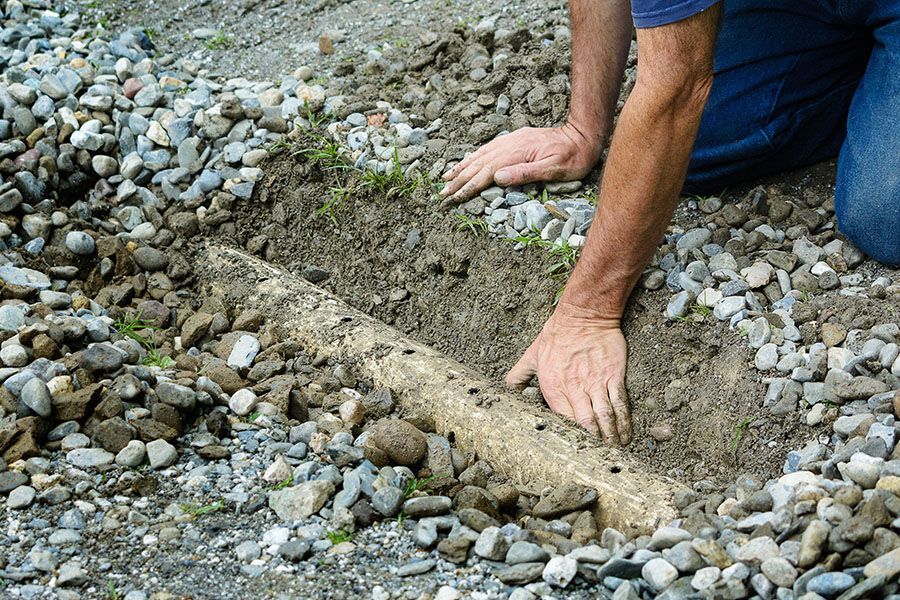
Factors to Consider When Choosing Gravel or Fabric
When choosing between gravel or fabric to prevent soil erosion in your landscape, there are several factors to consider:
- Landscape Slope: The slope of your
landscape will determine the depth of the gravel or fabric layer needed to prevent soil erosion. Steep slopes require a thicker layer to prevent water from washing away the
soil.
- Climate: The appropriate material will depend on the environment in your area. In dry climates, landscape fabric may be more beneficial in conserving water and retaining soil moisture.
- Plant Health: Consider the health of the plants in your landscape when choosing between gravel or fabric. Landscape fabric may be a better option if plants require much moisture as it helps retain soil moisture.
Maintenance and Replacement of Gravel and Landscape fabric
After installing a gravel or landscape fabric, it's essential to perform regular maintenance to ensure their effectiveness and longevity. Here are some tips for maintaining and replacing these materials:
- Regular maintenance: To prevent
soil
from seeping through the
gravel
or
fabric, it is essential to keep them free of debris and dirt. Use a leaf blower or a stiff broom to remove any leaves, dirt, or debris that may accumulate on the surface. Additionally, regularly inspect the
material
for any signs of damage or wear and tear.
- Replacement:
Gravel
and
landscape fabric
can last many years, but eventually, they must be
replaced. The
replacement
frequency will vary depending on local weather and foot traffic. If you notice that the
material
has become damaged or is no longer providing effective
erosion
control, it's time to
replace
it.
- Proper disposal: When it comes time to replace the gravel or landscape fabric, it's essential to dispose of it properly. Depending on the material utilized, it could need to be disposed of at a particular site or recycling facility. Confirm the appropriate disposal procedure with your local waste management organization.
By performing regular maintenance and replacing the material when necessary, you can ensure that your outdoor space remains stable and free from soil erosion. Your landscape can stay attractive and healthy for years with proper care and attention.
FAQs
Will using landscape fabric or gravel prevent all soil erosion?
Using landscape fabric or gravel can help prevent soil erosion, but it's important to note that no method is 100% foolproof. Heavy rainfall, extreme weather conditions, and other factors can still cause some erosion. However, using these materials can significantly reduce the amount of erosion and help maintain a stable landscape.
Is one material better than the other for preventing soil erosion?
The choice between
landscape fabric or gravel largely depends on the specific needs of your landscape. Gravel is a good option for areas with heavy foot traffic or vehicles, providing a more stable surface. Landscape fabric is a better option for many plants requiring moisture, as it can help retain soil moisture. Consider the slope of your landscape, climate, and the health of your plants when choosing between the two materials.
Final Verdict
Preventing soil erosion is essential to maintaining a healthy and stable landscape. Gravel and landscape fabric are effective materials that can help prevent soil erosion, but choosing one depends on various factors. By considering the slope of your landscape, climate, and the health of your plants, you can select the material that's best for your outside space after doing some research.
Good gravel or landscape fabric installation ensures their effectiveness and longevity. By carrying out the procedures described in this blog, you can install these materials correctly and enjoy the benefits of a stable landscape that requires less maintenance.
Keep soil erosion and weeds from taking over your landscape. Using the required components and installing them correctly, you can enjoy a beautiful and stable outdoor space for years. So, whether you choose gravel or landscape fabric, take the necessary steps to prevent soil erosion and keep your landscaping healthy and beautiful.
You might also like
Blogs
Book a Service Today
We will get back to you as soon as possible
Please try again later
You will not find a landscape design and construction company that is more passionate,
focused and dedicated to exceeding your highest expectations!
See what our customers are saying!
All Rights Reserved | Luck Landscaping LLC

